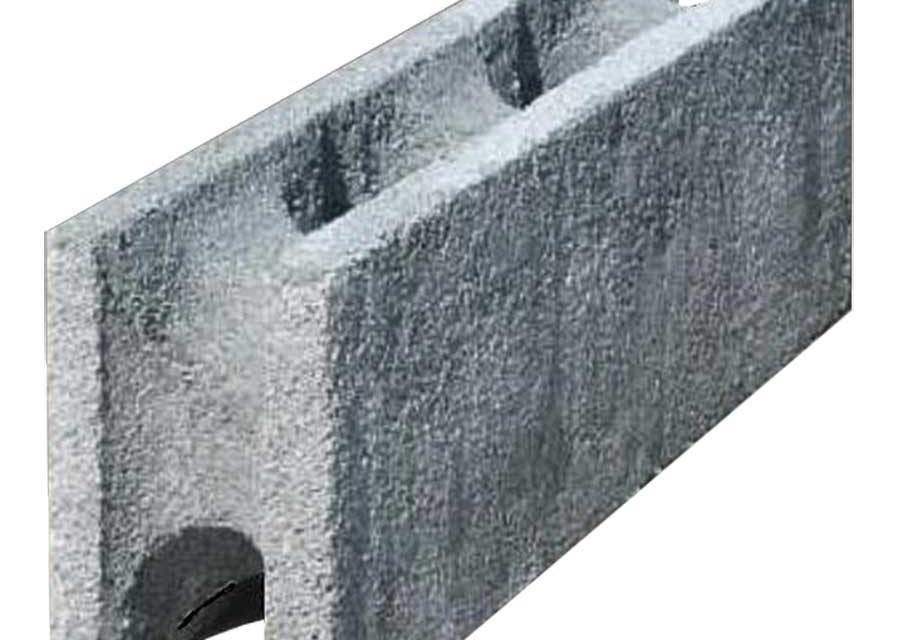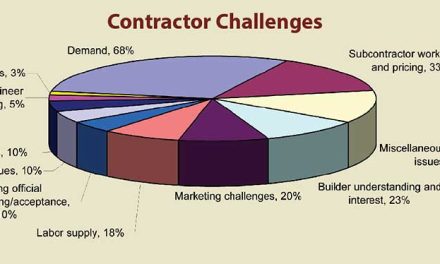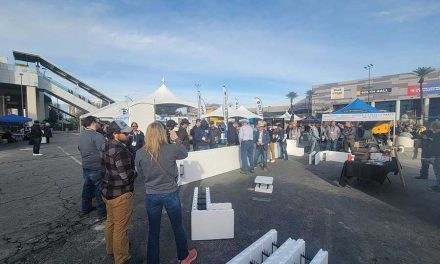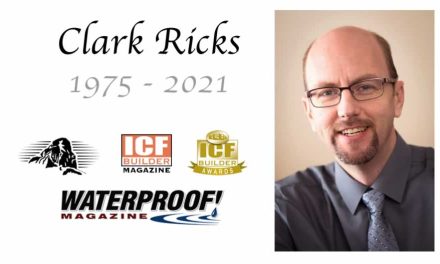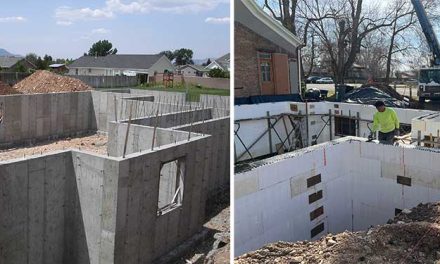In addition to all-foam ICFs, several other stay-in-place forming systems are on the market.
Insulated Concrete Blocks (ICBs) are made from a blend of EPS and Portland cement. Sometimes called “gray blocks” or “composite ICFs,” they are termite-proof, fireproof, and will not melt or burn. Nails and screws hold wherever they are driven, making interior and exterior finishes much easier to apply. Stuccos and plasters can be applied directly to the block without mesh and without sheetrock and still meet code. The forms can be cut and shaped with standard carpenter tools.
ICBs are screen-grid blocks, meaning the concrete forms a series of columns and beams (usually every 16 inches on center), and use half the concrete of a regular “flat-wall” ICF system.
These blocks are considerably denser—and heavier—than their all-foam counterparts. On the market since the 1970s, they can tolerate high-slump concrete and enthusiastic vibration, with far less bracing and reinforcement than other ICFs. However, a 48”x16” block of this type weighs nearly 50 lbs. and larger ones need to be craned into place.
Wood-Fiber Systems: Made from wood fiber and cement, these blocks mimic concrete masonry units (CMU) in size, weight, and shape. Unlike CMU, though, they do have some insulating value, and finishes attach directly to the block without furring. They have a successful track record stretching back to the 1950s in both the residential and commercial sectors.
Vinyl Forms: Installed as vertical planks, these systems are especially attractive when the form is intended to serve as a final finish. Popular applications include aquaculture, agriculture, and car wash facilities. Insulation can be added to one side of the cavity of the wall if needed.

